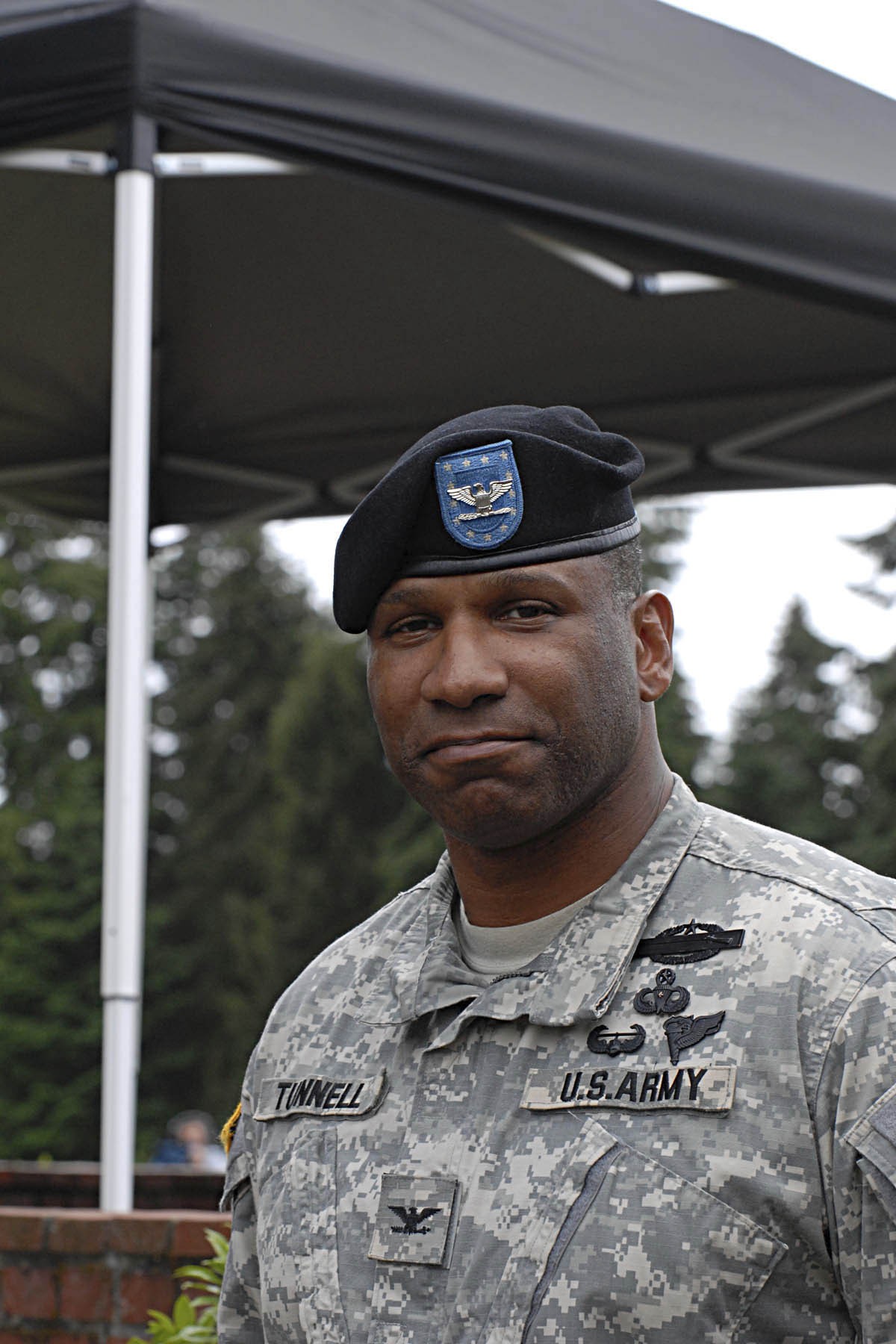FORT LEWIS, Wash. - Emboldened by thin coalition presence, strong tribal allegiances and radical doctrine that would return Afghanistan to seventh-century Shariah law, the Taliban has tightened its grip on the southern part of the country.
But a U.S. force is en route to inconvenience the jihad.
"We're going to the heart, the birthplace of the Taliban," said Command Sgt. Maj. Robert Prosser, the senior enlisted Soldier of 5th Brigade, 2nd Infantry Division. "(The Taliban) had better pray 10 times a day instead of five, because we're bringing a lot of folks with a lot of guns and we're bringing hell with us."
Guns are just the beginning. There has never been a force on earth as well trained and equipped as the Destroyer Brigade, said its commander, Col. Harry D. Tunnell IV. He will lead three infantry battalions, a cavalry squadron, a field artillery battalion, a special troops battalion and a support battalion to South Asia - all outfitted with the latest technology the defense industry and U.S. Army can provide.
The maneuver battalions will employ the Land Warrior System to better communicate on the move; what one LWS-equipped Soldier sees, all see. Intelligence will flow across the companies upward through battalion tactical operations centers on the newest digital equipment, putting situational awareness on the ground, where it's needed.
The 3rd Battalion, 17th Artillery Battalion takes the more agile M-777 105 mm howitzer to Operation Enduring Freedom, taking advantage of its maneuverability to send the lighter guns forward to better support the companies.
Destroyer infantry and cavalry Soldiers will ride to the fight in the first Stryker formations in the country. Though there is debate in defense circles about the efficacy of the fighting vehicle in the mountainous country, most believe its stealth, speed and endurance will help deliver combat power at decisive times and places.
Retired four-star general and military analyst Barry McCaffrey said the engineers' hard work in Afghanistan in recent years will pay off for 5th Bde., 2nd Inf. Div. combat vehicles.
"I'm thrilled they're sending Stryker(s) to Afghanistan. We've finally got the Ring Road (linking Kabul, Kandahar and Herat) three-fourths done," McCaffrey said during a Fort Lewis visit in February. "We're starting a $10-billion program to build roads to the provincial capital and the district capitals. We've got to be able to move around that country at high speeds and on occasion, there are going to be 100 to 400 Taliban on the ground when we get there. We needed armor. Stryker can move on those emergent road networks."
The brigade will bring an array of other capabilities with it: Lt. Col. Steven Allen's 402nd Brigade Support Battalion has augmented its maintenance kits with tools specific to Stryker extrication and maintenance, ahead of the Army curve; the top 50 Arabic-speaking language-enabled Soldiers received a two-month crash course in Pashtu to assist commanders and interpreters in negotiations with local imams and mukhtars; Lt. Col. Patrick Gaydon will coordinate Provincial Reconstruction Teams as part of his Brigade Special Troops Battalion's governance and infrastructure mission. Gaydon and his staff will execute a strategy of engaging with local government and tribal leaders to help them build the elements of a stable society.
This complex, multidimensional brigade of approximately 4,000 Soldiers materialized from a standing start in October 2006.
"The men and women who stand before you today are the one and only Stryker brigade combat team that was generated from absolutely nothing," said Brig. Gen. Jeff W. Mathis III, the deputy commanding general of I Corps and acting Fort Lewis commanding general, during the June 19 deployment ceremony.
Senior NCOs joke that the brigade started with a headquarters building, 20 Soldiers and a case of toilet paper.
The brief history of the Destoyer Brigade shows many examples of solving problems on the fly and overcoming obstacles.
When the brigade thought it was the Army's highest priority to fill, DOD accelerated the deployment of its sister 4th Brigade, 2nd Infantry Division, which received the next replacement wave of Soldiers bound originally for the Destroyers. As the manpower floodgates opened in spring 2007 and overwhelmed the Fort Lewis Reception Center, Prosser set up a brigade version, complete with its own transportation and billeting.
From the beginning, realistic training for war was the chief priority throughout the brigade. The "Always First" Soldiers of 2nd Battalion, 1st Infantry were doing long marches and combat physical training from the start. The 1st Battalion, 17th Infantry Soldiers under Lt. Col. Jonathan Neumann trained in the snow throughout the holiday season of December 2007.
In October 2008, Tunnell took the entire brigade to Yakima for a complex fire-coordination field training exercise. Each battalion made long, circuitous movements to YTC and performed multiple missions on the way to mirror future missions in Afghanistan.
The brigade learned officially that its mission had changed from Iraq to Operation Enduring Freedom as it deployed to the National Training Center in California for its mission readiness exercise. Tunnell decided to forgo a traditional NTC orientation phase and launch directly into operations. His instincts are born of experience.
Tunnell and Prosser are decorated veterans of Operation Iraqi Freedom. Tunnell commanded the 1st Battalion, 508th Infantry Regiment of the 173rd Airborne Brigade, suffering serious wounds in an ambush in Kirkuk in 2003. Prosser, the command sergeant major of 1st Battalion, 24th Infantry Regiment, received a Silver Star for actions he took to protect his wounded battalion commander near Mosul, including a hand-to-hand struggle with an al-Qaida fighter.
"We're going to eradicate the Taliban," Prosser told the graduating class of 5th Bde., 2nd Inf. Div. Pashtu linguists last month. "We've got to be strong because our journey is about to begin."
Don Kramer is a reporter with Fort Lewis' Northwest Guardian.


Social Sharing